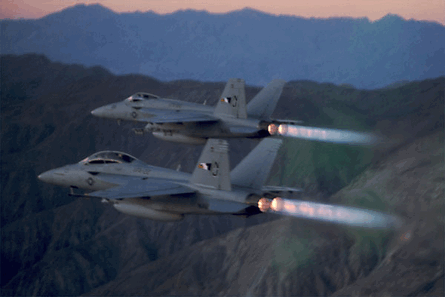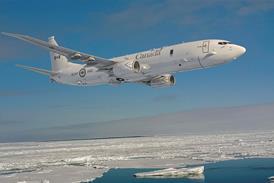BAE Systems, Inc earlier this month delivered the first production units of a next-generation datalink terminal for US combat aircraft, ushering in a new era of connectivity for fast-moving jets on the battlefield.
Meanwhile, the company - formerly known as BAE Systems North America - is also awaiting a final decision expected by end-year from the US Department of Defense on the path forward for developing a new waveform for high data-rate communications.
Since the 1980s, Link 16 has been the standard data network for a generation of combat aircraft, but it is currently limited to 256kbps throughput and governed by assigning time slots to each user for transmitting and receiving messages.
BAE's new terminal - dubbed the multifunctional information distribution system-joint tactical radio system (MIDS-JTRS) - makes three major improvements: throughput rate quadruples to 1Mbps messaging moves to the internet protocol (IP) standard and new waveforms expand connectivity to new platforms.
The new terminals are currently being tested aboard US Navy Boeing F/A-18E/F Super Hornets, replacing the older MIDS-low volume terminal (LVT).
Initial operational capability for MIDS-JTRS on the F/A-18 is scheduled for March 2009, says John Byrnes, BAE's director of business development.
 |
|---|
One major difference between the MIDS-LVT and the new MIDS-JTRS terminal is access by potential foreign customers. The US National Security Agency has not approved the programmable cryptographic keys for foreign users, Byrnes says. That means the MIDS-LVT must remain the standard terminal for foreign buyers until the cryptographic issue is resolved.
While so-called "fourth-generation" combat aircraft move to the MIDS-JTRS standard, the DoD is also working to decide the future of a high-data rate waveform for fifth generation and other advanced combat aircraft.
A decision on whether to move forward with the Rockwell Collins Tactical Targeting Networking Technology is expected by year-end, although Byrnes says the DoD may decide to adopt an entirely new waveform for the future standard.
BAE is also working to develop a next-generation waveform called the Flexible Access Secure Transfer (FAST). Rather than introduce a new, high-data rate signal, this is aimed at upgrading the connectivity of older aircraft using Link 16 terminals. The system aggregates unused time slots with Link 16 to boost throughput from 256kbps up to 1Mbps.
In July, the US Congress slowed the development of FAST by pushing the next round of funding to 2009, Byrnes says. BAE is seeking at least $10 million to advance FAST from a technology readiness level between five or six to at least seven.
Source: Flight International























